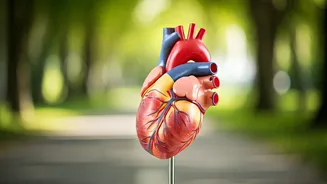Swelling in Legs
One of the initial warning signs of poor blood circulation in the legs is swelling. This often manifests as puffiness in the ankles, feet, or lower legs.
The swelling arises because when circulation is compromised, the fluid tends to accumulate in these areas rather than being efficiently transported back to the heart. This buildup of fluid, known as edema, can lead to discomfort, tightness in the skin, and even difficulty in putting on shoes. The underlying causes of the swelling can vary, ranging from venous insufficiency, where the veins struggle to pump blood back up, to peripheral artery disease, which reduces blood flow in the arteries. Identifying the cause is important because various lifestyle modifications and medical interventions exist to improve circulation and alleviate the swelling.
Leg Skin Changes
Changes in skin appearance represent another noticeable indication of poor blood circulation. The skin may take on a different color, becoming either pale, bluish, or even reddish. A lack of adequate blood flow can lead to a decrease in oxygen delivery to the skin cells. This deprivation can result in the bluish hue, referred to as cyanosis, which often becomes more apparent when the legs are dangling. Furthermore, the skin might become cold to the touch, and the hair on the legs may become sparser or stop growing altogether. Over time, the skin may become thin, dry, and easily injured, resulting in slower healing of wounds and ulcers. Recognizing these visible alterations is pivotal in the early identification of circulation concerns, making swift medical assistance and lifestyle changes essential.
Leg Pain & Cramps
Persistent leg pain, cramps, or discomfort are frequently encountered symptoms associated with compromised blood circulation. These sensations commonly intensify with physical activity, as the muscles demand more oxygen than is available. This pain, often described as claudication, is a hallmark of reduced blood flow and it typically lessens with rest. Cramps may occur in the calf muscles, especially at night, disrupting sleep and causing distress. Peripheral artery disease is frequently linked to this type of pain. In addition to these symptoms, people might experience a feeling of heaviness or fatigue in their legs, which is aggravated by walking or standing for extended periods. Paying attention to the frequency, intensity, and the circumstances in which these pains occur is necessary to evaluate the severity of the circulation issue.
Improve Circulation Habits
Enhancing blood circulation often involves incorporating specific lifestyle adjustments. Regular exercise, like brisk walking or cycling, can dramatically improve blood flow. These exercises help to strengthen the cardiovascular system and encourage the flow of blood through the vessels. Eating a balanced diet that is low in saturated fats and sodium supports heart health. Staying hydrated is also important because adequate fluid intake maintains blood volume and helps prevent dehydration. Moreover, those who smoke are strongly advised to quit, as smoking constricts blood vessels. Elevating your legs when sitting or lying down can alleviate swelling and reduce pressure on the veins. Using compression socks can also provide external support, and improve blood flow to the legs. Any lifestyle change should complement your medical care plan that can be tailored to your particular needs and concerns.




